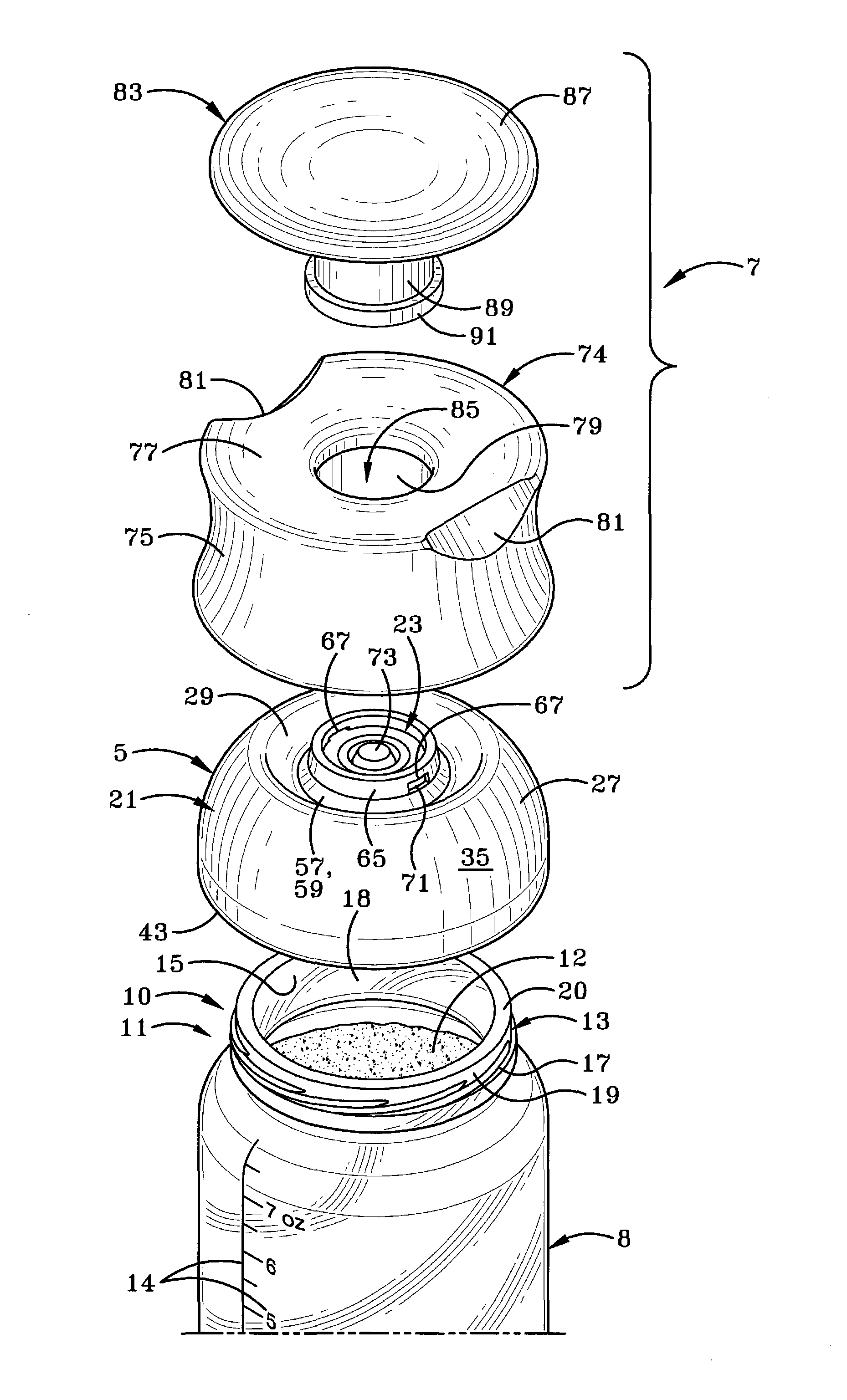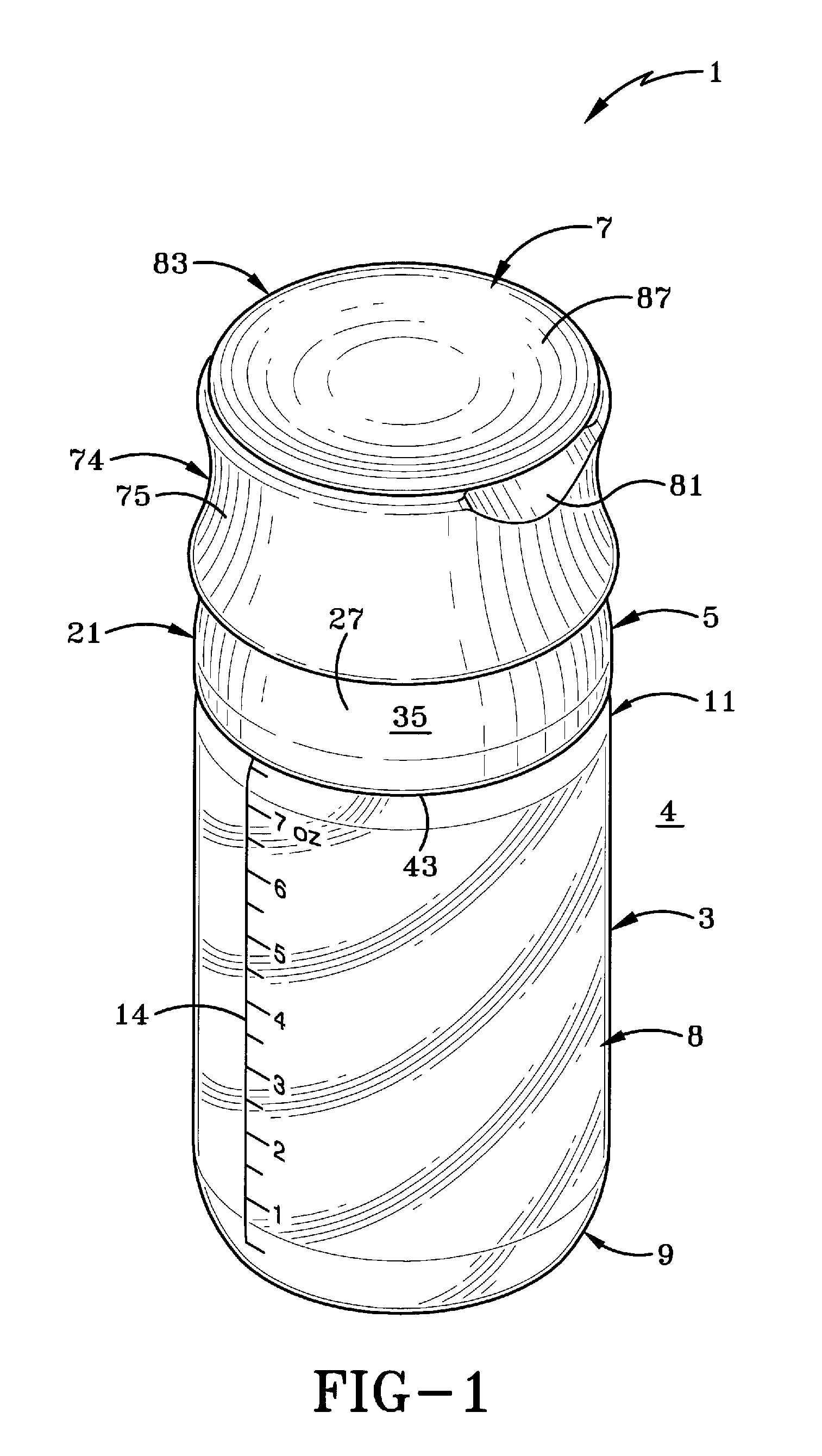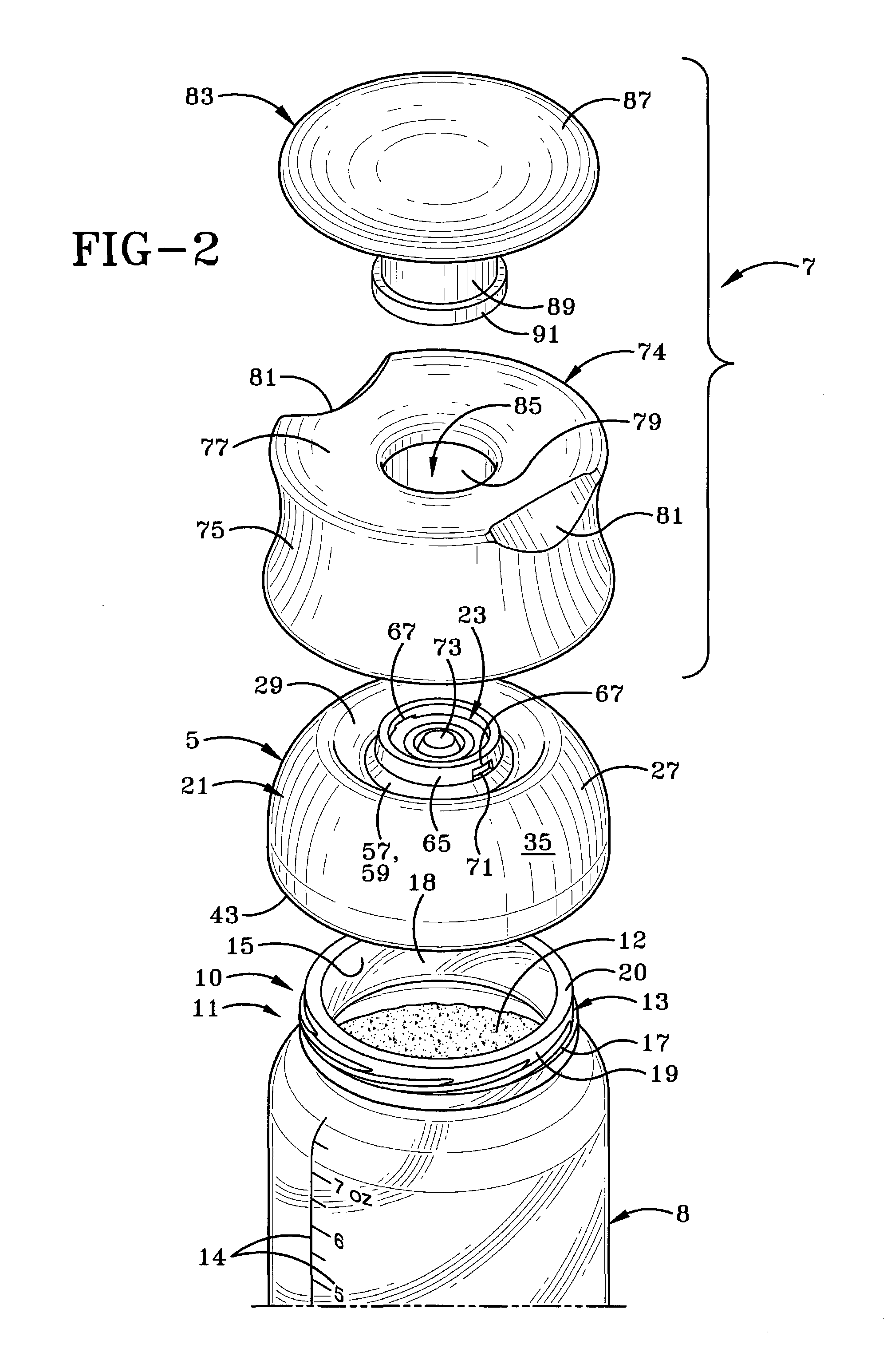Vacuum lid for use with baby food jars
a technology for vacuum lids and food storage containers, which is applied in the direction of transportation and packaging, rigid containers, tray containers, etc., can solve the problems of less desirable designs of this type, less desirable vacuum pumps and containers related to these devices, and inability for users to recognize when the desired vacuum is needed
- Summary
- Abstract
- Description
- Claims
- Application Information
AI Technical Summary
Problems solved by technology
Method used
Image
Examples
Embodiment Construction
[0023]The food storage device of the present invention is shown in FIGS. 1-10 and is indicated generally at 1. As shown inFIGS. 1, 2, and 4, food storage device 1 is generally comprised of three main elements, a container 3, a lid assembly 5, and a pump assembly 7.
[0024]Container 3 extends from a lower end 9 to an upper end 11, and generally includes a storage portion 8, a rim portion 10, an exterior 4 and an interior 6. Rim portion 10 includes an annular lip 13 disposed proximate upper end 11. Annular lip 13 defines a container opening 15, whereby an amount of food 12 may be placed therethrough to fill storage portion 8 of container 3. Rim portion 10 further includes a plurality of threads 17 disposed on an outer surface 19 extending outwardly away therefrom. Outer surface 19 runs generally perpendicularly around the periphery of a generally flat upper surface 20. As commonly used in the art, a set of indicia 14 or other graduated markings may be displayed on a portion of container...
PUM
 Login to View More
Login to View More Abstract
Description
Claims
Application Information
 Login to View More
Login to View More - R&D
- Intellectual Property
- Life Sciences
- Materials
- Tech Scout
- Unparalleled Data Quality
- Higher Quality Content
- 60% Fewer Hallucinations
Browse by: Latest US Patents, China's latest patents, Technical Efficacy Thesaurus, Application Domain, Technology Topic, Popular Technical Reports.
© 2025 PatSnap. All rights reserved.Legal|Privacy policy|Modern Slavery Act Transparency Statement|Sitemap|About US| Contact US: help@patsnap.com



